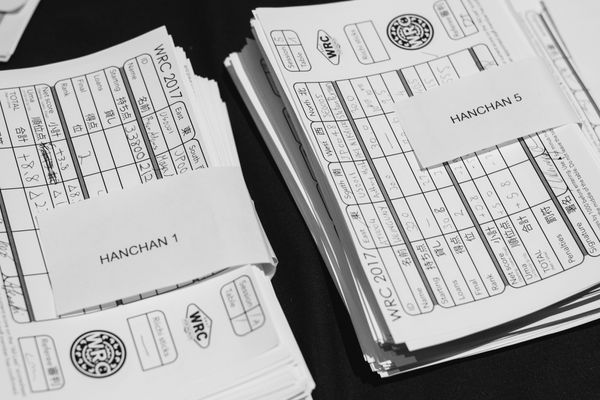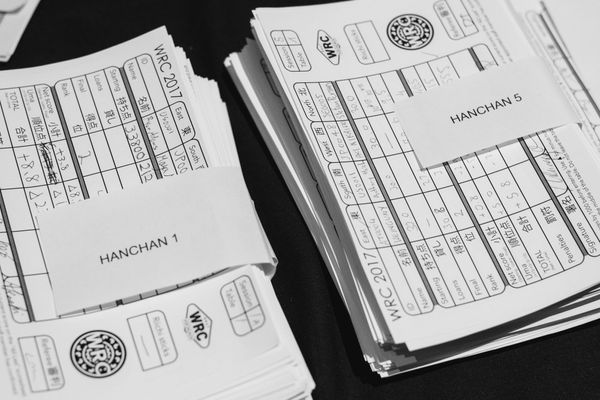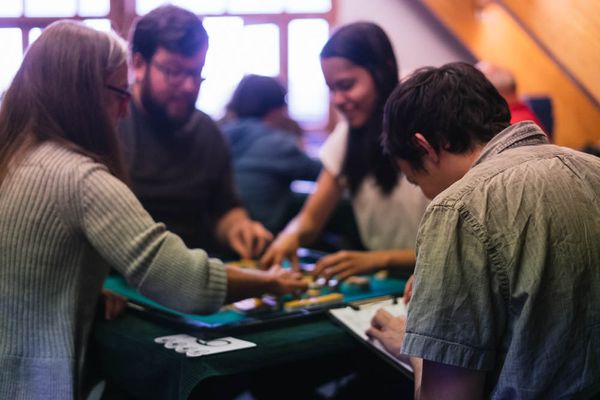[Houou Lab] Looking at Tenhoui ASAPIN’s Calling Part I
![[Houou Lab] Looking at Tenhoui ASAPIN’s Calling Part I](/content/images/size/w1200/2018/03/stratdefault.jpg)
Original article by Kentaro on his blog, but was republished on Mahjong Watch recently. Translated by an annoymous translator.
Looking at ASAPIN (@asakarapinpin’s) paifu, there are plenty of cases where he makes unexpected melds, from pushing his chances of winning to the absolute max, to unexpectedly chasing after a Riichi. Although some are often difficult to understand from first glance, they are carefully thought out, and extremely experienced plays.
This time, we’ll look at ASAPIN’s melding in two parts. Understanding this can certainly help you improve your win rate, and by extension, your other statistics. In the first part, we will look at 1) deciding the conditions for opening a closed hand and 2) chii'ing to elongate a shape and 3) chii'ing to switch out a tile. In Part 2, we will look at 1) melding in situations where you’re cornered, and 2) chasing after riichis by melding.
Conditions for opening a closed hand.
Deciding whether to make the first call is the most important aspect of melding. That’s because regardless of whether you decide to call again or not, you won’t be allowed to riichi for the rest of the round. Thus, deciding when to call is essentially deciding when you can accept the minuses of not being able to riichi.
Two distinctive aspects of ASAPIN’s melding are 1) aggressively melding with dora 2 hands, and 2) relaxing the conditions for melding greatly when it's obvious that kamicha is going for a non-standard hand (such as Kokushi Musou, or Chiitoitsu). Let us look at some examples.
ASAPIN’s Condition 1: Dora Dora Dash!!
The naming of this is clearly, a rip-off of the recently popular “Toitoi Dash”
In modern mahjong, it is recommended that you call even from an early stage in the game if you are 1-shanten (1 away) with two ryanmen waits in a tanyao dora 2 situation. One might tend to prefer to keep it closed for a possible mangan, but it is important to recognize that completing a melded 3900 or 5800 point hand is much more likely to be successful.
ASAPIN melds dora 2 hands extremely aggressively. If he completes the hand, its still relatively valuable, and if he manages to incorporate another dora or aka dora while rushing, the hands becomes almost mangan level.
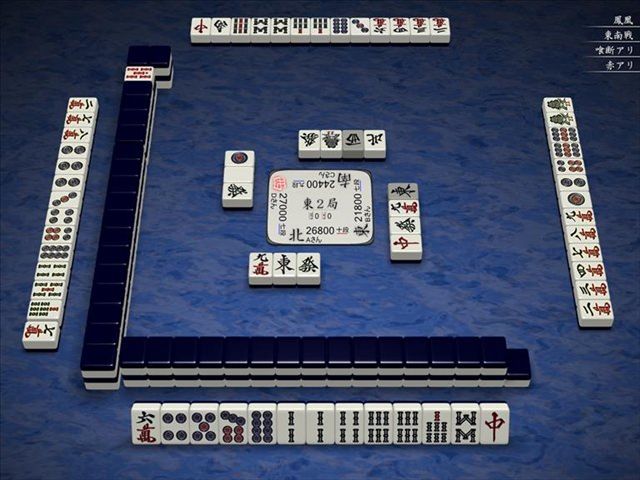
In this situation, he is 2-shanten with dora 2. However, with the possible terminal wait in the pinzu set, one may feel uneasy melding for tanyao.
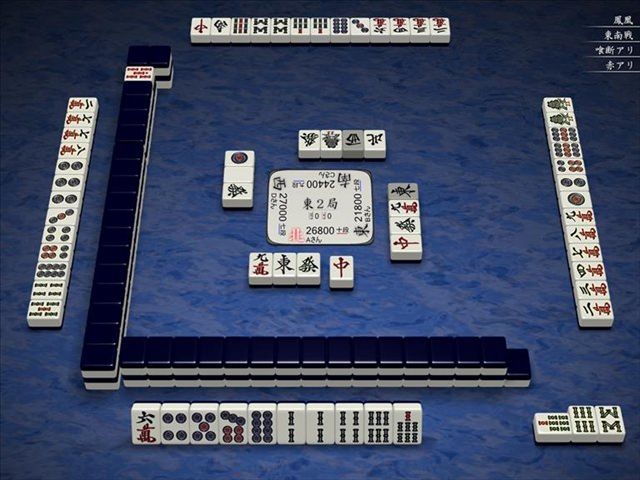
Quickly, he Chiis  to expand the shape. Waiting for what is effectively a
to expand the shape. Waiting for what is effectively a  penchan and the dora indicator kanchan
penchan and the dora indicator kanchan  would have been difficult. By elongating the souzu shape, he’s effectively now just trying to pick up anything that would work with
would have been difficult. By elongating the souzu shape, he’s effectively now just trying to pick up anything that would work with 


 to make a potential shape. Points-wise, just one aka dora would make this a mangan hand. Even if we had continued with a closed hand, there would have been no guarantee this would have been a mangan hand. In the worst case scenario, it would have even become a Riichi dora 1, 2600 point hand.
to make a potential shape. Points-wise, just one aka dora would make this a mangan hand. Even if we had continued with a closed hand, there would have been no guarantee this would have been a mangan hand. In the worst case scenario, it would have even become a Riichi dora 1, 2600 point hand.
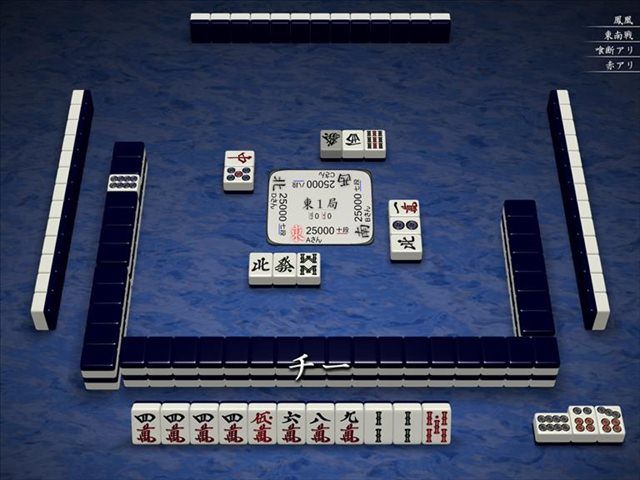
On the third turn of East 1, he chiis from a penchan and ryanmen 1-shanten position, opening a hand while staying 1-shanten. Even though the 
 wait was ryanmen, three tiles were already visible. Since he basically needed to complete that set, he melds it for now and waits to make use of the red
wait was ryanmen, three tiles were already visible. Since he basically needed to complete that set, he melds it for now and waits to make use of the red  that was picked up and complete a 5800 point hand. Instead of drawing
that was picked up and complete a 5800 point hand. Instead of drawing 
 and waiting on a penchan
and waiting on a penchan  , attempting to incorporate this
, attempting to incorporate this  somehow is much more desirable.
somehow is much more desirable.
ASAPIN’s melding condition number 2: Start melding aggressively when Kamicha is going for a non-conventional hand!
The second of ASAPIN’s distinctive melding behaviors is aggressively melding when kamicha is going for a non-conventional hand. If kamicha is discarding a significant number of middle tiles, it helps make even less than optimal hands more likely to succeed.
Of course, just two or three turns is not enough information to tell you if they are going for a non-conventional hand, but if a middle tile appears without warning, don’t miss the opportunity to start melding.
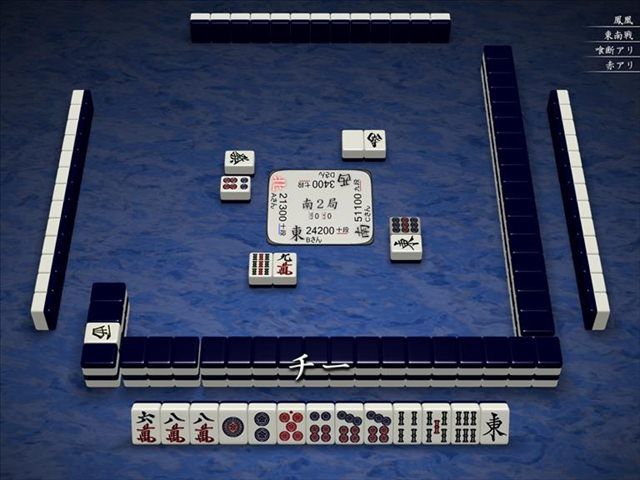
Kamicha discards  in the second turn. He starts melding now. It’s not certain at this stage whether kamicha is going for a non-conventional hand, but the possibility is certainly there. Kamicha would also certainly discard
in the second turn. He starts melding now. It’s not certain at this stage whether kamicha is going for a non-conventional hand, but the possibility is certainly there. Kamicha would also certainly discard  if he ever gets it, so ASAPIN melds with
if he ever gets it, so ASAPIN melds with 

 leaving another
leaving another 
 likely to be completed. In essence, we can say that this
likely to be completed. In essence, we can say that this  chii is essentially helping us make two complete sets, an obvious call.
chii is essentially helping us make two complete sets, an obvious call.
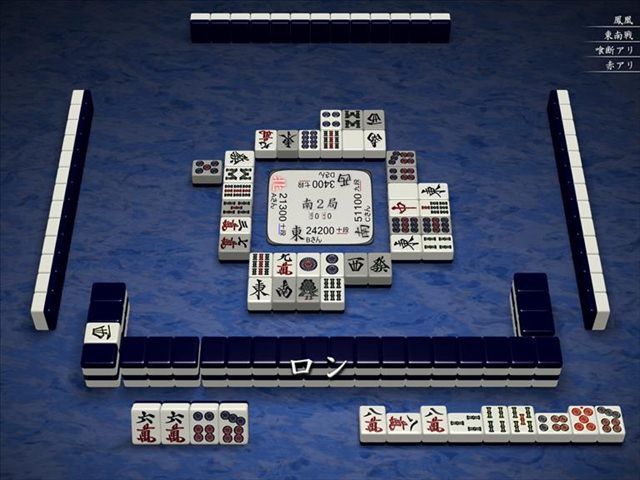
The final shape ends up being a strong 
 wait. The other players have difficulty reading this wait, especially with the early meld in the same area.
wait. The other players have difficulty reading this wait, especially with the early meld in the same area.
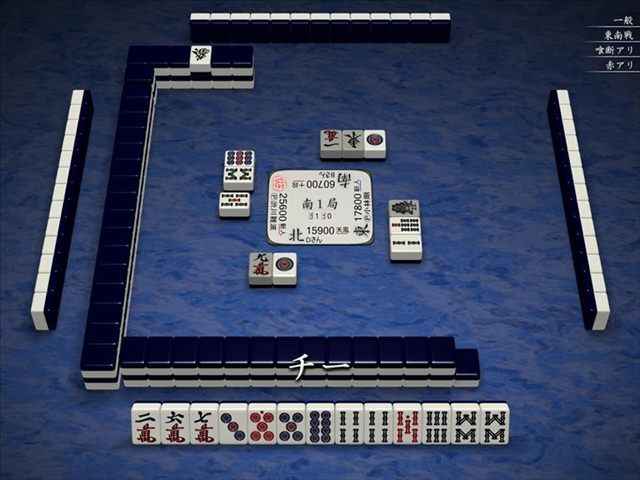
In this scenario, he combines both the dora dora dash and the non-conventional wait principles. It’s extremely valuable to finish a 3900 hand quickly and end third place’s dealer turn. Planning to open this hand anyways, he starts calling here, creating the right number of blocks to complete the hand.
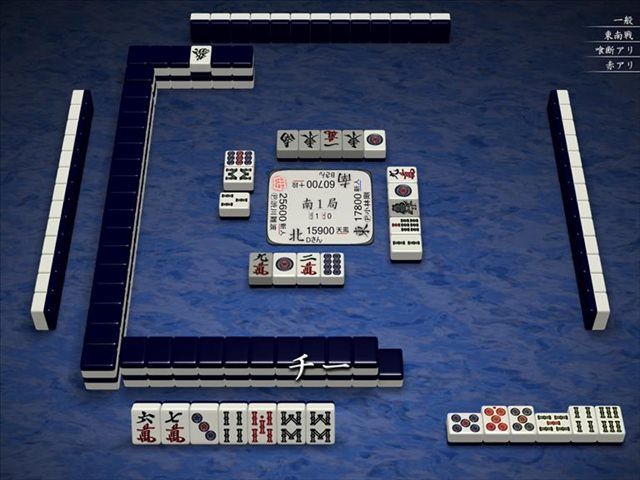
It seems his perception was correct. It’s clear that kamicha is going for a Honitsu in manzu. After calling three times in quick succession, ASAPIN is already tenpai. Even from the kamicha’s position,  would have been likely a kan or a pon rather than a chi. It would have been even more difficult to predict that he could have had the red
would have been likely a kan or a pon rather than a chi. It would have been even more difficult to predict that he could have had the red  .
.
Pushing hand completion chances to the limit with 1) chii'ing to elongate and 2) chii'ing to switch out tiles.
The most technical aspect of ASAPIN’s melding would probably be elongating and switching shapes by chii'ing. Once the hand is opened, pushing the hand’s chances of completion to the max requires a high degree of finesse in using chii to both elongate existing shapes and swap out tiles. This includes using chii aggressively to move hands even slightly forward, or ensuring the use of dangerous tiles and skipping potentially risky draws by chii-swapping. There should be a lot to learn from ASAPIN here.
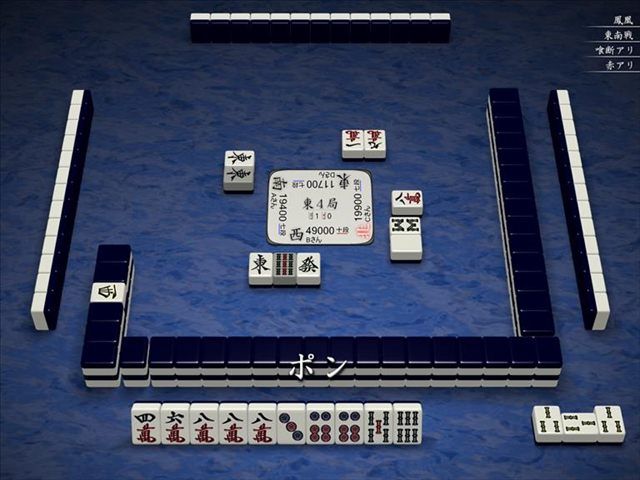
There’s not much to say here. Pon'ing the  gives him a ryankan shape to accept
gives him a ryankan shape to accept 
 . Even though it may reduce his defensive abilities, calling to speed up the hand even by a little bit is valuable because he certainly has the fastest hand out of the four. He shouldn’t be worried if he is left with good shapes. Clearly, this would be a different story if it was later into the round.
. Even though it may reduce his defensive abilities, calling to speed up the hand even by a little bit is valuable because he certainly has the fastest hand out of the four. He shouldn’t be worried if he is left with good shapes. Clearly, this would be a different story if it was later into the round.
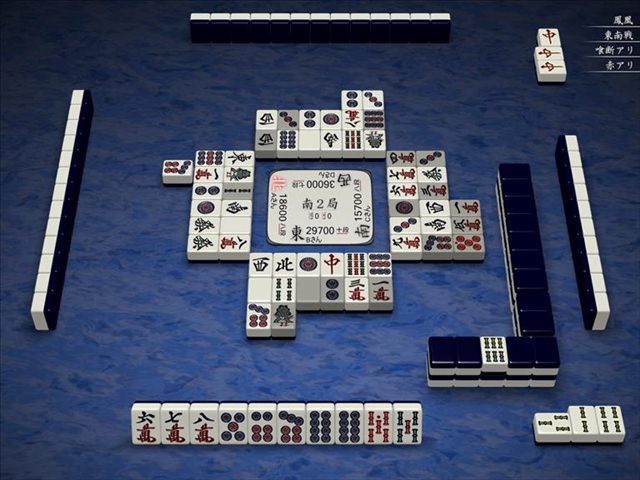
He is currently tenpai with a shanpon wait. Thus, when kamicha discards the  ...
...
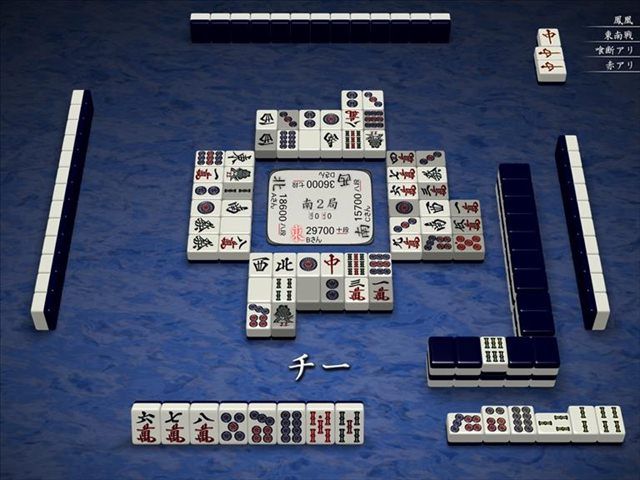
He chiis for the 678 shape and discards the remaining  。This prevents him from potentially drawing a sketchy souzu tile, in turn increasing the number of turns he can reasonably maintain tenpai. The kanchan
。This prevents him from potentially drawing a sketchy souzu tile, in turn increasing the number of turns he can reasonably maintain tenpai. The kanchan  wait is also stronger than the shanpon that he currently has. Although a casual player may not recognize the potential for a useful call here, it is the best choice given the circumstances.
wait is also stronger than the shanpon that he currently has. Although a casual player may not recognize the potential for a useful call here, it is the best choice given the circumstances.
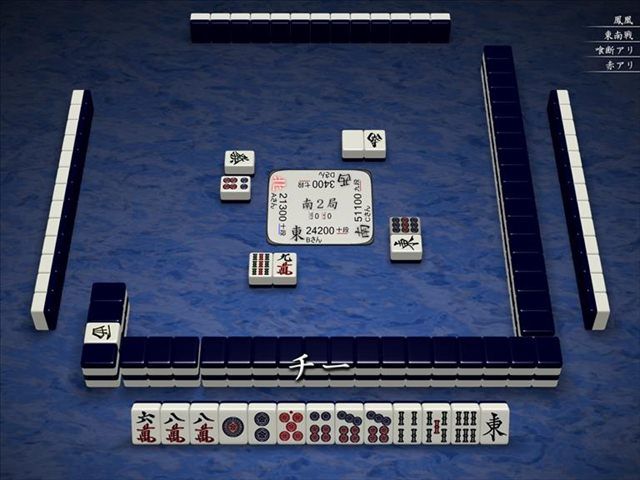
This is from the example earlier. The (potential) non-conventional hand that kamicha is going for dictated his  chii.
chii.
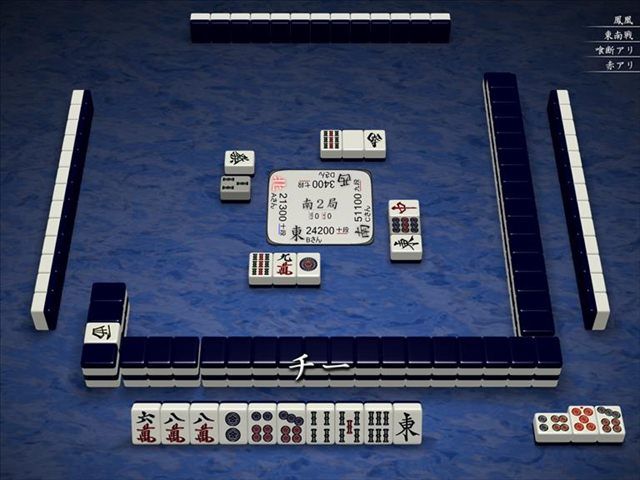
And subsequently, a  as well. ASAPIN chiis it, leaving a
as well. ASAPIN chiis it, leaving a  . Once he opens the hand, he is focused on building up his middle tiles.
. Once he opens the hand, he is focused on building up his middle tiles.
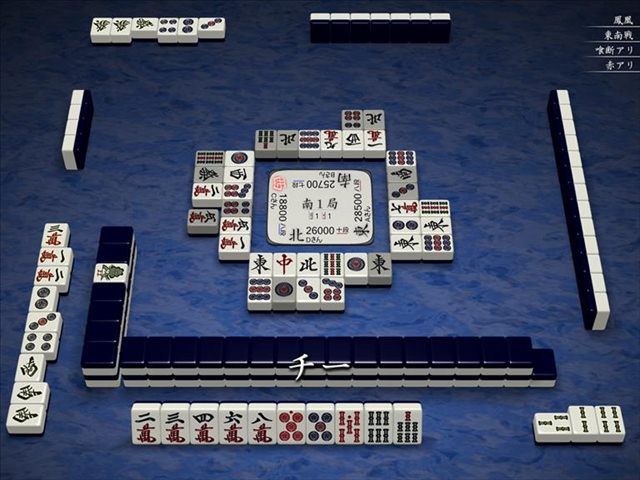
his is another great chi that was discussed earlier. He calls the  , discarding the relatively safe
, discarding the relatively safe  while preventing his own draw. Reading from kamicha’s discards that he doesn’t have (or need)
while preventing his own draw. Reading from kamicha’s discards that he doesn’t have (or need)  ASAPIN decides that a sidewait on
ASAPIN decides that a sidewait on  is much more likely than a kanchan
is much more likely than a kanchan  wait.
wait.
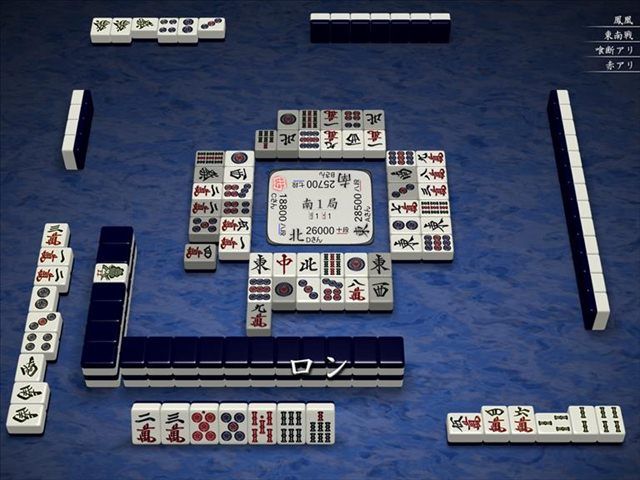
As predicted, he secures the  , completing the mangan hand.
, completing the mangan hand.

